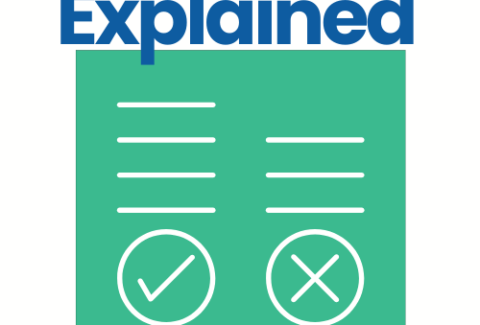Evaluation Methodologies: Proven Frameworks to Maximize Project Impact
December 19, 2023 2025-02-26 15:39Evaluation Methodologies: Proven Frameworks to Maximize Project Impact
If you want to measure the impact of your program, improve planning, and ensure your project’s success, it’s crucial to understand the different evaluation methodologies. These effective techniques can help you enhance your project outcomes.
Key Takeaways:
- Evaluation methodologies are crucial to measure program impact and ensure project success.
- Effective techniques, such as Logical Framework Analysis and Results-Based Management, can enhance project outcomes.
- Improving planning with evaluation methodologies is key to achieving long-term success.
- Using evaluation methodologies is essential for data-driven decision-making.
- Understanding and implementing evaluation methodologies can help organizations better achieve their goals.
Logical Framework Analysis (LFA)
When it comes to program planning, project management, and impact assessment, Logical Framework Analysis (LFA) is the go-to methodology. Also called the LogFrame approach, it provides a systematic and structured framework that defines project goals, objectives, activities, and indicators. By doing so, it enables organizations to monitor and evaluate their progress effectively, keeping them on track.
LFA involves four main components:
| Components | Description |
|---|---|
| Goals/Objectives | The overall target that the program aims to achieve. |
| Outputs | The tangible and measurable outcomes that result from the program’s activities. |
| Activities | The specific actions necessary to achieve the outputs. |
| Indicators | The metrics used to measure progress towards the outputs and goals/ objectives. |
By considering all these elements, LFA can help organizations identify and address risks, ensure that resources are allocated appropriately, and make evidence-based decisions.
If you’re looking to improve your program planning or project management while also measuring its impact, Logical Framework Analysis presents a reliable solution.
Theory of Change (ToC)
The Theory of Change (ToC) methodology is designed to help you articulate the underlying assumptions and causal pathways of your program. It is a powerful tool that can help inform program design, implementation, and outcome-based evaluation. By identifying the connections between inputs, activities, outputs, and outcomes, ToC can provide a clear understanding of how your program creates change.
To use ToC effectively, you need to start with a program theory that articulates what you expect to achieve and how you plan to do it. This program theory forms the basis for developing the logic model that outlines the causal pathways between your program’s inputs, activities, outputs, and outcomes. By mapping out these causal pathways, you can identify the key assumptions that underpin your program. This knowledge can help you to make informed decisions, adjust your program’s design, and create a more effective and impactful program.
An important feature of ToC is its focus on outcomes. By identifying the outcomes you want to achieve and the causal pathways that lead to those outcomes, you can conduct outcome-based evaluation. This enables you to assess whether your program is achieving its intended outcomes and, if not, to adjust your program’s design or implementation to increase its effectiveness.
By using ToC, you can create a more comprehensive understanding of your program, its causal pathways, and its outcomes. This allows you to make more informed decisions, improve your program’s impact, and increase the likelihood of achieving your program’s goals.
Outcome Mapping
If you’re seeking a participatory approach to evaluating your program, Outcome Mapping is a valuable option. This approach emphasizes the importance of stakeholder engagement and participation throughout the evaluation process. By tracking behavior change among program stakeholders, you can gain valuable insights into the effectiveness of your initiatives.
Outcome Mapping allows for adaptive management and learning by actively involving stakeholders in the evaluation process. By encouraging open communication and collaboration, it builds a sense of collective ownership of the program and its outcomes.
One of the key benefits of Outcome Mapping is its focus on behavior change. This approach recognizes that achieving positive outcomes often requires a change in behavior among program stakeholders. By tracking behavior change, you can monitor the program’s effectiveness and identify areas for improvement.
“Outcome Mapping is about understanding and promoting change in complex social and ecological systems.”
If your program involves a complex system, Outcome Mapping can help you better understand and promote change within it. By prioritizing stakeholder engagement and participation, you can create a more collaborative approach to evaluation.
Image alt text: Outcome Mapping in action with a group of people collaborating around a table.
Results-Based Management (RBM)
As a management approach, Results-Based Management (RBM) emphasizes the importance of setting clear objectives, developing a results framework, and monitoring progress to ensure accountability and effective decision-making. By linking strategic planning, program design, and performance measurement, RBM provides a comprehensive approach to managing programs.
The results framework is a vital component of RBM, outlining the program’s expected outcomes, outputs, and activities. By clearly defining and measuring these indicators, RBM enables organizations to track program progress and assess the effectiveness of their initiatives.
Performance measurement is another critical component of RBM, providing organizations with the necessary data to evaluate program outcomes and adjust their activities accordingly. By monitoring KPIs, analyzing data, and taking corrective actions, RBM builds a culture of continuous improvement and enhances program effectiveness.
Accountability is an essential aspect of RBM, ensuring that organizations are responsible for achieving their expected results and taking corrective actions when necessary. By focusing on results, RBM creates a system of checks and balances, enabling organizations to demonstrate the impact of their programs and increase public trust.
RBM at a Glance
| Principles | Benefits |
|---|---|
| Linking strategy, program design, and performance measurement | Comprehensive approach to managing programs, aligning all aspects of program implementation |
| Setting clear objectives and results framework | Defining program goals and outcomes, providing a structure for measuring progress |
| Performance measurement and monitoring | Providing organizations with data to evaluate program effectiveness, adjust activities, and make informed decisions |
| Accountability for achieving results | Creating a culture of responsible program management, increasing public trust |
By implementing Results-Based Management (RBM), organizations can enhance their program management, increase accountability and transparency, and improve program effectiveness.
Performance Monitoring
When implementing a program, collecting relevant data and monitoring progress towards key performance indicators (KPIs) is crucial to its success. Performance Monitoring enables you to analyze and track KPIs, understand the strengths and weaknesses of your program and make informed decisions to improve program implementation and outcomes.
The data collection process is an essential element of performance monitoring. It involves setting up a data collection system, identifying relevant KPIs and consistently tracking progress towards these indicators over specific periods. Additionally, this process helps identify program components which may be abandoned, altering the program objectives or modifying project requirements.
A comprehensive and clearly defined monitoring plan is necessary for effective performance tracking. It should provide guidance on how KPIs will be monitored, analyzed, and utilized in decision-making processes. It also aims to establish performance accountability and ensure stakeholders are aware of the program’s progress and potential changes.
To help track KPIs, organizations can develop scorecards or dashboards, which offer greater visibility and instant access to performance data. These performance reporting tools can help measure progress towards KPIs, simplify data analysis and present data in visually appealing formats.
“Performance Monitoring is key to ensuring that your program is on track to meet its goals. Through data collection and progress tracking, you can identify areas of improvement and make well-informed decisions.”
Impact Evaluation
When assessing program effectiveness, Impact Evaluation is a crucial methodology to measure the long-term effects and outcomes. Through the use of causal attribution and counterfactual analysis, you can determine the program’s true impact and thereby inform decision-making effectively.
Causal attribution is the process of identifying the contribution a program has on the observed impact by studying alternative causes. On the other hand, counterfactual analysis involves analyzing the data based on outcomes that could have been if the program did not exist.
This type of evaluation is important to understand whether the intended program outcomes have been achieved and to identify long-term effects that may not have been immediately apparent.
“Impact Evaluation provides decision-makers with valuable insights into their program’s effectiveness and is essential to achieve the best outcomes from your initiatives”
With Impact Evaluation, you can ensure that your programs meet their goals, adapt to changing contexts, and align with stakeholder needs and expectations. Utilizing this evaluation methodology will lead to improved program implementation and ultimately ensure the success of your projects.
Cost-Benefit Analysis (CBA) and Cost-Effectiveness Analysis (CEA)
If you want to evaluate the costs and benefits of a program effectively, you need to use economic evaluation methodologies like Cost-Benefit Analysis (CBA) and Cost-Effectiveness Analysis (CEA). These methods help you measure both the financial and non-financial benefits of a program, such as improved health or increased well-being, with the costs of running the program. CBA and CEA are useful for identifying the most efficient allocation of limited resources.
CBA measures the net benefits of a program and compares them to the costs, expressed in a monetary amount. It enables you to identify whether the benefits are greater than the costs, making the program a worthy investment. By contrast, CEA measures the unit costs of achieving certain program outcomes, allowing you to choose which approach is the most cost-effective.
When using these methods, be sure to consider the monetary and non-monetary costs and benefits of the program. To get an accurate measurement, you need to account for all the costs involved in running the program and all the benefits that it generates. CBA and CEA are useful for making informed decisions and maximizing social welfare by allocating resources effectively.
Example of CBA and CEA in Action
To demonstrate the effectiveness of CBA and CEA, here is an example comparing two programs that aim to improve the mental health of young people. Program A has a total cost of $50,000, while Program B has a total cost of $100,000. After conducting a CBA, you find that the benefits of Program A are $60,000, while the benefits of Program B are $110,000. Therefore, Program A has a higher benefit-to-cost ratio, indicating that it is the more cost-effective program. However, using CEA, you find that the unit cost of Program B, per percentage increase in mental health, is lower than in Program A, indicating that even though Program B is more expensive, it produces more results for each dollar spent.
Qualitative Data Analysis and Quantitative Data Analysis
When it comes to evaluation methodologies, two essential techniques are Qualitative Data Analysis and Quantitative Data Analysis. Qualitative Data Analysis involves the interpretation of textual or narrative data, providing a more in-depth understanding of the program impact. (keyword: data interpretation)
On the other hand, Quantitative Data Analysis focuses on numerical data analysis, providing a more objective and statistical approach to evaluating program impact. (keyword: data-driven insights)
Combining Qualitative Data Analysis with Quantitative Data Analysis provides a comprehensive understanding of program impact, enabling organizations to make data-driven decisions and improve program outcomes. When analyzing both forms of data, it’s crucial to identify patterns and trends, providing a clearer picture of program impact. (keyword: data interpretation, data-driven insights)
“The primary aim of qualitative research is to provide an in-depth understanding of a social or human problem. The data collected are usually textual and/or visual, and the analysis involves an interpretive, naturalistic approach to the data using meaning as the common denominator. The research is typically concerned with the context of phenomena and often employs a range of methods and techniques to capture multiple facets of the situation under study.” – Wikipedia
Participatory Evaluation and Real-Time Evaluation
Participatory Evaluation and Real-Time Evaluation are two methodologies that prioritize stakeholder involvement and continuous learning. By engaging stakeholders throughout the evaluation process, you can ensure that their perspectives and knowledge are included, and that you have a more comprehensive understanding of your program’s impact.
Real-Time Evaluation involves ongoing monitoring and evaluation, allowing you to make course corrections and adapt your program as needed. This approach enables you to identify potential issues early on and make adjustments before it’s too late. By doing so, you can improve the effectiveness and efficiency of your program, leading to better outcomes.
Participatory Evaluation is a collaborative approach that puts stakeholders at the center of the evaluation process. By involving them in decision-making and guiding the evaluation process, you can build trust and increase accountability. This approach encourages open communication and feedback, enabling you to make data-driven decisions that support continuous learning and improvement.
Table: Participatory Evaluation vs Real-Time Evaluation
| Participatory Evaluation | Real-Time Evaluation |
|---|---|
| Collaborative | Continuous |
| Stakeholder Involvement | Ongoing Monitoring and Evaluation |
| Trust-building | Early Issue Identification |
| Data-driven Decision-making | Course Corrections |
Goal-Free Evaluation, Outcome Harvesting, and Contribution Analysis
When it comes to evaluating program outcomes, it’s not always necessary to have predefined goals. Goal-Free Evaluation is an evaluation approach that explores unexpected outcomes, which can lead to new insights and ideas. Outcome Harvesting, on the other hand, captures significant changes, providing a comprehensive understanding of the program’s impact.
Contribution Analysis examines the contribution of a program to observed outcomes, enabling organizations to understand the specific factors that influence program success. By utilizing these evaluation approaches, you can gain valuable insights into your program outcomes and make data-driven decisions to improve its effectiveness.

| Evaluation Approach | Focus | Method |
|---|---|---|
| Goal-Free Evaluation | Unexpected outcomes | Exploration of data |
| Outcome Harvesting | Significant changes | Evidence collection |
| Contribution Analysis | Program contribution to observed outcomes | Causal analysis |
Conclusion
When it comes to evaluating your programs, there are numerous methodologies to choose from, each with its unique benefits. By selecting the right evaluation methodologies for your projects, you can effectively measure your program’s impact, improve planning, and ensure the success of your initiatives.
Whether you choose to implement Logical Framework Analysis (LFA) for program planning and impact assessment, use Theory of Change (ToC) to articulate causal pathways, or adopt Results-Based Management (RBM) to link strategic planning, program design, and performance measurement, the key is to select the right methodologies that align with your program’s needs.
Once you’ve chosen your evaluation methodologies, you can use tools such as Performance Monitoring to track progress and identify areas for improvement. Impact Evaluation can help you assess your program’s long-term effectiveness, while Cost-Benefit Analysis (CBA) and Cost-Effectiveness Analysis (CEA) can provide economic evaluation insights.
Don’t forget to consider qualitative and quantitative data analysis methods, such as Qualitative Data Analysis and Quantitative Data Analysis, to gain a comprehensive understanding of program impact. Additionally, Participatory Evaluation and Real-Time Evaluation can help you involve stakeholders throughout the evaluation process and enable continuous learning.
In conclusion, by understanding and implementing the right evaluation methodologies, you can achieve better program outcomes, enhance your decision-making, and ensure the success of your projects.
FAQ
What is Logical Framework Analysis (LFA)?
Logical Framework Analysis (LFA), also known as the LogFrame approach, is a systematic method used for program planning, project management, and impact assessment. It provides a structured framework to define project goals, objectives, activities, and indicators, enabling organizations to monitor and evaluate their progress effectively.
What is the Theory of Change (ToC)?
The Theory of Change (ToC) is a methodology that helps organizations articulate the underlying assumptions and causal pathways of their programs. By identifying the connections between inputs, activities, outputs, and outcomes, ToC enables outcome-based evaluation and informs program design and implementation.
What is Outcome Mapping?
Outcome Mapping is a participatory evaluation approach that focuses on tracking behavior change among program stakeholders. It emphasizes the importance of stakeholder engagement and participation throughout the evaluation process, allowing for adaptive management and learning.
What is Results-Based Management (RBM)?
Results-Based Management (RBM) is a management approach that links strategic planning, program design, and performance measurement. It emphasizes the importance of setting clear objectives, developing a results framework, and monitoring progress to ensure accountability and effective decision-making.
What is Performance Monitoring?
Performance Monitoring involves tracking and analyzing key performance indicators (KPIs) to assess the progress and effectiveness of a program. It enables organizations to collect data, measure performance, and make informed decisions to improve program implementation and outcomes.
What is Impact Evaluation?
Impact Evaluation focuses on assessing the long-term effects and outcomes of a program. It involves determining the causal attribution of program results, often using counterfactual analysis, to understand the program’s true impact and inform decision-making.
What are Cost-Benefit Analysis (CBA) and Cost-Effectiveness Analysis (CEA)?
Cost-Benefit Analysis (CBA) and Cost-Effectiveness Analysis (CEA) are economic evaluation methodologies used to assess the costs and benefits of a program. They provide insights into the efficiency of resource allocation and help decision-makers make informed choices.
What are Qualitative Data Analysis and Quantitative Data Analysis?
Qualitative Data Analysis involves the interpretation of textual or narrative data, while Quantitative Data Analysis focuses on the numerical analysis of data. Together, they provide a comprehensive understanding of program impact.
What are Participatory Evaluation and Real-Time Evaluation?
Participatory Evaluation engages stakeholders throughout the evaluation process, ensuring their perspectives and knowledge are included. Real-Time Evaluation involves ongoing monitoring and evaluation, allowing for course corrections and adaptive management.
What is Goal-Free Evaluation, Outcome Harvesting, and Contribution Analysis?
Goal-Free Evaluation explores unexpected outcomes, while Outcome Harvesting captures significant changes. Contribution Analysis examines the contribution of a program to observed outcomes.












